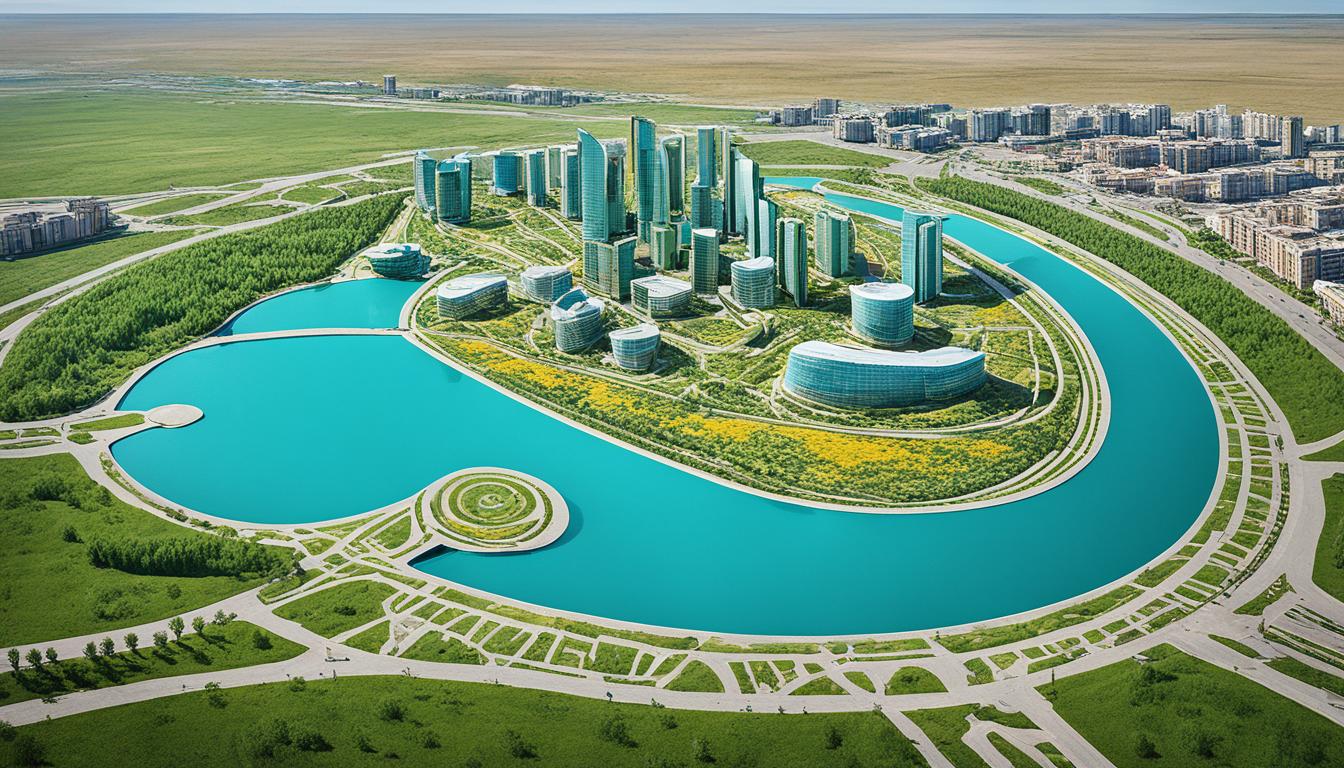Malawi Biodiversity: Animal and Plant Species and What Is Under Threat
Malawi is a country blessed with a remarkable diversity of plant and animal species. Its unique position in the Great Rift Valley has fostered the development of an extraordinary range of ecosystems, each teeming with life. From the vast savannas to the pristine mountain ranges, Malawi’s biodiversity is a source of awe and wonder.
With over 6,000 flowering plant species, including 122 endemic varieties, Malawi boasts an incredible floral heritage. Yet, the future of 248 plant species hangs in the balance, threatened with extinction due to various factors. It’s not just plants that face peril, though. Malawi is also home to 192 mammal species, 83 amphibian species, 145 reptile species, 630 bird species, and over 1,000 fish species. These thriving populations exist within the country’s terrestrial and aquatic ecosystems, which are safeguarded by 97 protected areas covering 90% of the forest reserves.
Despite these conservation efforts, Malawi’s biodiversity faces significant challenges. Habitat loss, the overexploitation of resources, invasive species, pollution, and climate change threaten the delicate balance of nature. Urgent action is needed to preserve and protect Malawi’s natural heritage and ensure the survival of its diverse plant and animal species.
Key Takeaways
- Malawi is home to over 6,000 flowering plant species, with 122 of them being endemic.
- The country boasts 192 mammal species, 83 amphibian species, 145 reptile species, 630 bird species, and over 1,000 fish species.
- Habitat loss, overexploitation of resources, invasive species, pollution, and climate change are the main threats to Malawi’s biodiversity.
- Conservation efforts are crucial to preserve Malawi’s natural heritage and protect its plant and animal species.
- Urgent action is needed to mitigate the challenges and ensure the survival of Malawi’s rich biodiversity.
The Importance of Malawi’s Biodiversity
Malawi’s biodiversity plays a crucial role in the country’s economy and culture. Agro-biodiversity contributes about 40% to the GDP and provides over 90% of employment and merchandise export earnings. The fisheries, forestry, and wildlife sectors also contribute significantly to the country’s GDP. Biodiversity supports socio-cultural functions, such as beliefs in supernatural beings associated with forest biodiversity. Additionally, Malawi’s diverse ecosystems, including water bodies, national parks, and cultural heritage sites, attract tourists and provide opportunities for activities like site-seeing, safari tours, and mountain hiking. Lake Malawi, in particular, is globally important for its fish diversity and supports the livelihoods of over 250,000 people who depend on fishing for food and income. The preservation of Malawi’s biodiversity is therefore crucial for the country’s economic and cultural well-being.
Threats to Malawi’s Biodiversity
Malawi’s natural heritage, characterized by its diverse plant and animal species, faces numerous threats that jeopardize its survival. The conservation of Malawi’s wildlife and preservation of its natural heritage require immediate action to mitigate these risks. The primary threats to Malawi’s biodiversity include habitat loss and fragmentation, climate change, invasive alien species, pollution, and the alteration of terrestrial and aquatic ecosystems.
Habitat loss and fragmentation are significant factors contributing to the decline of Malawi’s natural heritage. Unsustainable resource utilization and management have led to continuous degradation in the surrounding areas, resulting in reduced tree cover in forest reserves. For instance, the Liwonde Forest Reserve has experienced a significant decrease in forest cover over the years.
Climate change poses a severe threat to Malawi’s biodiversity as well. The degradation of catchment areas has led to periodic drying up of Lake Chilwa, adversely affecting bird and fish species. This disruption in their habitats puts these unique species at risk of extinction.
Invasive alien species, such as non-native plants and animals, pose a further threat to Malawi’s biodiversity. These invasive species outcompete native species for resources, disrupt ecological balance, and further diminish the diversity of the ecosystem.
Pollution, in various forms, is another significant contributor to the degradation and alteration of Malawi’s ecosystems. Agricultural runoff and industrial pollution harm the environment and negatively impact the survival of wildlife, exacerbating the challenges faced by Malawi’s natural heritage.
Urgent action is essential to address these threats effectively. Preserving the natural heritage of Malawi and protecting its diverse plant and animal species requires the implementation of sustainable practices, conservation initiatives, and the enforcement of legislation to ensure the long-term survival of the country’s invaluable biodiversity.
Conservation Efforts in Malawi
Despite the threats to biodiversity, Malawi is committed to preserving and protecting its rich natural heritage. The country has made significant strides in enhancing wildlife conservation and promoting sustainable practices.
The National Biodiversity Strategy and Action Plan (NBSAP)
Malawi adopted its first NBSAP in 2006, outlining comprehensive strategies for species and habitat restoration, agricultural diversity conservation, and the strengthening of policies and legislation for biodiversity conservation. Currently, Malawi is in the final stages of finalizing the revised NBSAP for the 2015-2025 period, aligning with the Aichi Biodiversity Targets.
Conservation of Genetic Resources
Various institutions in Malawi are actively involved in conserving the genetic resources of plant species. These efforts aim to preserve the unique genetic diversity and ensure the long-term survival of valuable plants within the country.
Management of Invasive Alien Species
Malawi recognizes the threat posed by invasive alien species to its biodiversity. Efforts are being made to manage and combat these invasive species effectively, ensuring the protection of native flora and fauna.
Lake Chilwa Basin Climate Change Adaptation Programme
The Lake Chilwa Basin Climate Change Adaptation Programme is an initiative focused on promoting sustainable fishing practices in the region. By addressing the effects of climate change and prioritizing responsible fishing, this program aims to protect the delicate balance of aquatic ecosystems.
Mechanisms for Conservation
In Malawi, various mechanisms are in place to support and implement biodiversity conservation efforts. These mechanisms include legislation, funding, capacity-building, and coordination among relevant stakeholders. By prioritizing the preservation of Malawi’s natural heritage, these mechanisms ensure the effective conservation and sustainable use of the country’s rich biodiversity.

| Conservation Efforts in Malawi | Summary |
|---|---|
| National Biodiversity Strategy and Action Plan (NBSAP) | Adopted in 2006, the NBSAP outlines strategies for species and habitat restoration, agricultural diversity conservation, and strengthening policies and legislation for biodiversity conservation. |
| Conservation of Genetic Resources | Institutions in Malawi actively conserve the genetic resources of plant species to preserve genetic diversity and ensure long-term survival. |
| Management of Invasive Alien Species | Efforts are made to effectively manage and combat invasive species, protecting native flora and fauna. |
| Lake Chilwa Basin Climate Change Adaptation Programme | A program focused on promoting sustainable fishing practices in the Lake Chilwa Basin region to address the effects of climate change and protect aquatic ecosystems. |
| Mechanisms for Conservation | Legislation, funding, capacity-building, and coordination among stakeholders support the effective conservation and sustainable use of Malawi’s biodiversity. |
Impacts of Biodiversity Loss
The loss of biodiversity in Malawi and beyond has significant implications for ecosystems and human well-being. When biodiversity is lost, it leads to the degradation and loss of vital ecosystem services that support our planet. These services include the storage of carbon, protection against storms, and control of floods. Without a diverse range of plant and animal species, these essential functions of the ecosystem are compromised.
Additionally, the loss of biodiversity has direct effects on food security. Diverse ecosystems not only support agriculture but also provide important food sources such as fish. When biodiversity declines, the availability of these food sources decreases, putting a strain on the nutritional needs of communities.
Furthermore, the loss of plant species affects the availability of medicinal plants. Many plant species in Malawi have significant medicinal value and are crucial for primary healthcare. When these species decline, the availability of traditional remedies and treatments diminishes, impacting the well-being of local communities.
Biodiversity loss can also disrupt the ecological balance within ecosystems. With the decline of native species and the spread of invasive species, the delicate interactions within ecosystems are disturbed. This imbalance can have cascading effects on the entire ecosystem, affecting the survival and abundance of native species.
Preserving Malawi’s natural heritage and protecting its biodiversity is imperative for the health and well-being of both nature and people. By safeguarding the diverse ecosystems of Malawi, we ensure the continued provision of ecosystem services, the availability of essential food sources, and the preservation of medicinal plants. It is our collective responsibility to take action and prioritize the conservation of Malawi’s biodiversity for the benefit of current and future generations.

Factors Contributing to Biodiversity Loss
Biodiversity loss in Malawi and worldwide is driven by various factors. Habitat loss and degradation, resulting from agricultural expansion, deforestation, and commercial harvesting, are major contributors. The reliance on wood for fuel and other purposes in Malawi has led to high deforestation rates. Additionally, the introduction of non-native species has negatively impacted native species by outcompeting them for resources. Overexploitation, such as hunting and logging, is another significant factor, as species cannot reproduce at the same rate as they are being harvested. Climate change and pollution, including agricultural runoff and industrial pollution, further exacerbate biodiversity loss by altering ecosystems and impacting the survival of wildlife.

Addressing these contributing factors is essential for mitigating the loss of biodiversity in Malawi. By implementing conservation measures, such as sustainable land and resource management practices, protecting critical habitats, and promoting awareness among local communities, Malawi can strive towards preserving its natural heritage. Collaboration between government agencies, NGOs, and local communities can play a vital role in conserving Malawi’s biodiversity. It is crucial to understand the importance of protecting Malawi’s biodiversity to ensure the long-term survival of its unique plant and animal species.
The Value of Biodiversity
Biodiversity plays a vital role in sustaining ecosystems and providing essential services that contribute to human well-being. In the diverse ecosystems of Malawi, biodiversity supports various ecosystem services, including:
- Carbon Storage: Biodiverse forests and vegetated areas in Malawi capture and store carbon dioxide, helping mitigate climate change.
- Storm Protection: Coastal ecosystems and mangroves act as natural barriers, reducing the impact of storms and protecting communities.
- Natural Harbors: Ecosystems such as mangroves and coral reefs provide shelter for marine life and support fisheries.
- Flood Control: Wetlands and natural waterways regulate water flow, minimizing the risk of floods and waterlogging.
- Erosion Reduction: Plant diversity helps maintain soil stability, preventing erosion and preserving fertile lands.
In addition to these crucial ecosystem services, Malawi’s biodiversity plays a significant role in supporting the country’s economy and cultural heritage. The tourism industry, for example, thrives on the diverse ecosystems and cultural sites found in Malawi. Visitors are attracted to the country’s national parks, wildlife reserves, and beautiful landscapes, generating income and employment opportunities.
Furthermore, biodiversity in Malawi contributes to the medicine industry. Over 131 plant species in the country have medicinal properties, offering potential treatments and cures for various ailments.
Biodiversity also serves as a source of inspiration and innovation. The unique structures, designs, and systems found in nature provide valuable insights for sustainable architecture, engineering, and technology.
The economic, ecological, and cultural value of biodiversity highlights the crucial need to protect and conserve Malawi’s natural heritage. Preserving biodiversity contributes to the sustainability of ecosystems, helps in addressing climate change, and ensures the long-term well-being of both nature and people.

Actions to Promote Biodiversity Conservation
Efforts to conserve Malawi’s natural heritage and protect its biodiversity are underway. Several actions are being taken to ensure the preservation of the country’s unique plant and animal species.
The implementation of the National Biodiversity Strategy and Action Plan (NBSAP) is a key initiative. The NBSAP focuses on species and habitat restoration, agricultural diversity conservation, and the active involvement of local communities in biodiversity conservation efforts.
Conservation efforts also extend to the preservation of genetic resources of plant species, as well as the management of invasive alien species. These measures contribute to the overall protection of Malawi’s biodiversity.
Considerations for biodiversity have been integrated into policies and strategies at both national and local levels. This ensures that biodiversity conservation remains a priority throughout the country.
Institutions of higher learning play a vital role in promoting biodiversity conservation. They offer courses and programs dedicated to increasing awareness and understanding of the importance of biodiversity, contributing to capacity-building.
Mechanisms for monitoring and reviewing the implementation of biodiversity conservation efforts are being put in place to ensure their effectiveness. Regular evaluation and assessment help identify areas for improvement and provide guidance for future conservation initiatives.

In conclusion, the collective actions taken to conserve Malawi’s natural heritage and protect its biodiversity demonstrate the country’s commitment to environmental stewardship. By implementing strategic measures, involving local communities, and raising awareness, Malawi is actively preserving its rich and diverse natural resources for future generations.
Conclusion
Malawi’s biodiversity is the cornerstone of its economy, culture, and overall well-being. The incredible range of plant and animal species, along with the unique ecosystems they inhabit, provide invaluable ecosystem services and support various sectors such as tourism and food security. However, this rich biodiversity is facing numerous threats, including habitat loss, overexploitation, invasive species, pollution, and the ever-present challenge of climate change.
To safeguard Malawi’s natural heritage and ensure the continued existence of its diverse species, it is paramount to prioritize the conservation and protection of its biodiversity. This can be achieved through the implementation of comprehensive strategies, the enactment of effective legislation, and the promotion of sustainable practices. By embracing these measures, Malawi can not only preserve its unique natural heritage for future generations but also make a significant contribution to global biodiversity conservation efforts.
Protecting Malawi’s biodiversity is not just essential for the country itself; it is a responsibility that extends beyond its borders. The conservation of Malawi’s biodiversity is crucial for maintaining the delicate balance of ecosystems, supporting local communities, and fostering a sustainable future. Together, we can work towards a world where biodiversity thrives, and the precious natural heritage of Malawi and other nations remains intact for generations to come.
FAQ
What is the biodiversity like in Malawi?
Malawi is home to a rich and diverse range of plant and animal species, with over 6,000 flowering plant species, 192 mammal species, 83 amphibian species, 145 reptile species, 630 bird species, and over 1,000 fish species.
What threatens Malawi’s biodiversity?
Malawi’s biodiversity faces threats from habitat loss, overexploitation, invasive species, pollution, and climate change.
How does biodiversity contribute to Malawi’s economy and culture?
Biodiversity in Malawi contributes to about 40% of the GDP through agro-biodiversity, and supports sectors like fisheries, forestry, and wildlife, which contribute significantly to the country’s GDP. Biodiversity also holds cultural importance and attracts tourists to the diverse ecosystems and heritage sites.
What impacts does biodiversity loss have?
Biodiversity loss leads to the degradation and loss of ecosystem services, affects food security, disrupts ecological balance, and impacts human health by affecting the availability of medicinal plants.
What are the factors contributing to biodiversity loss in Malawi?
The major factors contributing to biodiversity loss in Malawi include habitat loss and degradation, overexploitation, climate change, and pollution.
What is the value of biodiversity?
Biodiversity provides valuable ecosystem services, supports various sectors of the economy, such as tourism and medicine, and serves as a model for innovation and designs.
What actions are being taken to promote biodiversity conservation in Malawi?
Malawi has adopted National Biodiversity Strategy and Action Plans focused on species and habitat restoration, agricultural diversity conservation, and the involvement of local communities. Efforts are also made to conserve genetic resources, manage invasive species, and integrate biodiversity considerations into policies and strategies.








